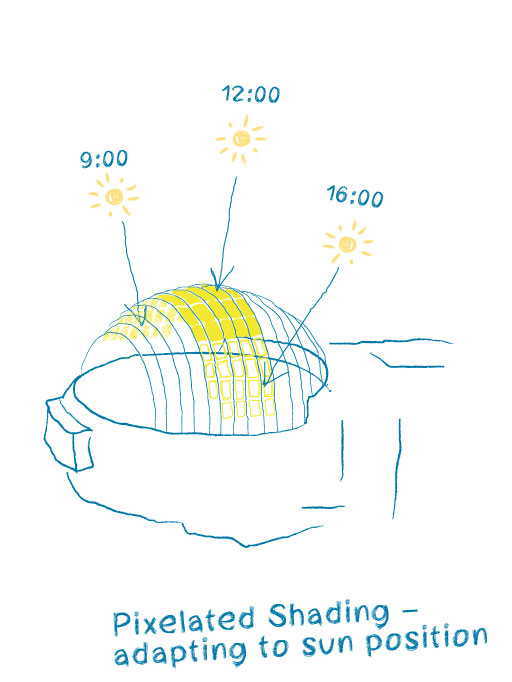Academy Museum of Motion Pictures, Los Angeles, CA, USA


The Oscar Museum’s historic “May Company Department Store” building from 1938 was refurbished and a new “sphere” shaped structure was added on the north side. The extension includes a 1,000-seat movie theatre and has a semi-outdoor terrace (13,000 ft²/ 1.200 m²) with a fully transparent glazed canopy on top.
Transsolar developed the concept for the thermal and visual comfort of the terrace for California's hot and sunny climate. The temperatures perceived under the dome should be milder throughout the year than in an unprotected outdoor space; a greenhouse effect is to be avoided. Further, the view of the surroundings was to be obstructed as little as possible.
Movable sunshade elements mounted under the glass roof prevent the terrace from overheating and minimize the risk of glare. Towards the outside, the protection is coated with a light color that reflects most of the sunrays. Towards the inside, a low-e coating ensures that heat radiation to the terrace is kept to a minimum.
The control system closes only those elements of the sunshade that cast a shadow on the dome's terrace, leaving the other elements open to maximize the dome's transparency and associated views. At the same time, the textile sunshade is slightly transparent and therefore allows views to the outside even when activated.
Although the sunshade and window glazing absorb the heat, it cannot reach the visitors of the terrace because a natural airflow dissipates it: There are opposing vents in the dome for cross-ventilation and at the highest point of the dome there are operable openings that increase airflow, taking advantage of the thermal stack effect. Optional retractable wind shields help to reduce the air velocities on the terrace to avoid draft situations in winter.
In addition to all passive measures, the terrace floor can be mildly conditioned using a thermal active slab system embedded in the floor, enhancing the thermal experience of visitors. Thermal simulations have shown that overheating hours can be limited to approximately 10% of the occupying times. For winter, only during 1% of the occupying hours, temperatures will be perceived slightly to cold.



